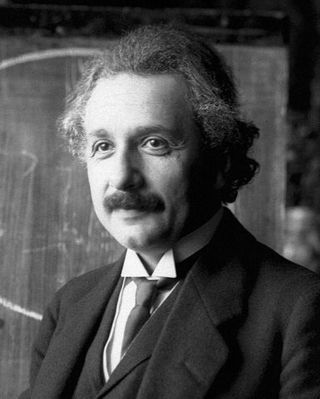Asperger's Syndrome
Did Einstein Show Asperger's Traits?
Psychological traits of historical figures cast light on current diagnoses.
Posted March 19, 2016
Did Einstein have some traits of Asperger's Syndrome, also viewed as a high-functioning segment of the autistic spectrum? That's one intriguing possibility along with details and speculations about Howard Hughes showing obsessive-compulsive behavior, Lincoln coping with melancholy, Darwin with anxiety, and Andy Warhol leaving evidence of compulsive hoarding in the engrossing new book Andy Warhol was a Hoarder: Inside the Minds of History's Great Personalities by noted science journalist Claudia Kalb.
Renewed interest in Albert Einstein arises at the same time as the discovery of gravitational waves in February 2016 confirmed his prediction of 100 years ago, and is also coincident with a growing interest in Autistic Spectrum Disorder, in particular the high-functioning type elsewhere described as Asperger’s Syndrome, marked among other things by difficulty with social cues and an intense focus on narrow interests. His intense focus on arcane scientific topics, disregard for social conventions in childhood such as respect for his teachers, and sometimes unkempt appearance are some of the characteristics the author described.

At the same time, he was among the highest functioning physicists that ever lived. This field, as well as other sciences, engineering, and math attract a disproportionate number of people with Asperger's traits, according to surveys by autism expert Simon Baron-Cohen at Cambridge University. Some observers speculate that the same could be said of Silicon Valley and the Boston tech corridor near MIT.
Einstein’s biographer Walter Isaacson argues against these speculations, pointing out that Einstein's romantic interests and spirited interactions with people showed an empathetic relationship with others. As a patent examiner, while writing four groundbreaking articles in physics in 1905, he found time to meet with a group of friends in Switzerland. After he achieved fame and a Nobel Prize, he traveled extensively to speak with admirers around the world. A possibility that can be reassuring to those concerned about aspergian traits in themselves or family members is that an individual can have some autistic characteristics without all of them.
The author wisely acknowledges that retrospective analyses like this can be questionable, but she has developed her conclusions after consulting widely with psychiatrists and psychologists. “I do not presume to know everything about these 12 minds and the infinite thoughts, fears, and desires that swirled through them. Far from it. But I learned enough to appreciate, more deeply than ever, the disparity that often exists between our inner and outer selves—despite their inseparable connection,” Kalb notes in the book’s Afterword, in a passage quoted by the American Psychiatric Association.
She also delves into the neuroscience thicket where connections between brain functions and autistic traits might be found. Speculations include that the pruning of synaptic connections normally occurring in childhood might differ in autism, that the condition might follow a high level of testosterone during fetal development resulting In a more "male brain" that focuses on how systems work, and that genetic factors might result in a number of relatives with similar traits. Another biological factor not explored in the book but published elsewhere is the possible role of oxytocin hormone in autistic traits.
A larger implication of Kalb's book as a whole is that mental health struggles need not preclude important contributions to humanity. Such personality traits as narcissism, paranoia, or sociopathy may be exceptions. We can add that some of our greatest leaders--Lincoln and Churchill to start--had the resilience to overcome both outer losses and inner adversity.


